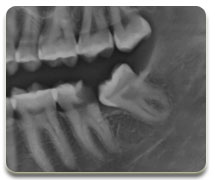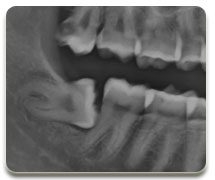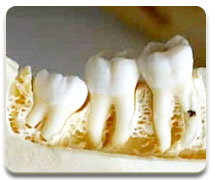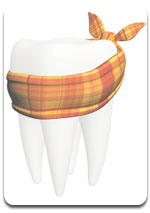
Wisdom molars (third molars) eruption and extraction is one of the most common dreaded ailment for any individual!
To go through an extraction for the same..be it surgical or non surgical…the stories and queries related to them made us have this page on our website!! This is to answer most of your queries and erase all your phobias!
Wisdom molars are nothing but third molars erupting after the second, in each quadrant of your jawbone. With most people, this eruption process takes place during their late teens or early twenties ( ages 18 to 24 years, although eruption outside this range is not uncommon) and hence the WISDOM TAG!!!
Wisdom teeth that are healthy, properly positioned and functioning well do not cause any problems and don’t require extractions.
FAQ: What causes problems with the wisdom teeth then?
Wisdom teeth may break partway through your gums, causing a flap of gum tissue to grow over them. The food then gets lodged beneath it and cause infection.
They may be crooked or facing the wrong direction. This is what we call IMPACTED WISDOM MOLARS.
An IMPACTED tooth refers to a tooth that has failed to emerge fully into its respected position. This failure to erupt properly might occur because
A) There is not enough room in the person’s jaw to accommodate the tooth or
B) The tooth’s eruption path is obstructed by other teeth or
C) The angulation of the tooth is improper
So when do you consider extracting your third molars???
As mentioned earlier, the impacted or partially erupted tooth may cause swelling, pain or infection of the surrounding gum and bone area.
They can also put pressure on the adjacent teeth, which can result in decay and infection of the otherwise sound tooth.
Lastly, a fully erupted wisdom tooth needs to be removed because they are very hard to clean and can become severely decayed.
X-Rays will then determine if your wisdom molar needs to be surgically removed!
THE PROCEDURE
Prior to starting the procedure, a local anesthetic is administered near the tooth to be removed. This makes the area numb and you don’t feel any pain during the rest of the procedure.
To surgically remove the tooth, the gum tissue covering the third molar is slightly reflected back, if required the bone surrounding the molar is trimmed and the tooth is gently eased out from the socket.
After cleaning the socket stitches are placed to close the wound back. They stay in place for about a week after which they are removed.
AFTER THE SURGERY
Use an icepack on the outside of your cheek for the first 24 hours.
Avoid vigorous rinsing and spitting which can dislodge the formed clot.
Take medications as prescribed regularly, which would include an antibiotic(to take care of infection), an analgesic commonly known as painkillers to take care of pain, swelling and inflammation and multivitamins
While your mouth is numb, be careful not to bite on the inside of your cheek, lip or tongue.
Relax and avoid strenuous physical activity like gymming, swimming, cycling. After routine extractions, work can be resumed on the same day, however surgical extractions may cause slight pain and discomfort and hence it is advisable to resume work the next day.
Eat cold and soft food like rice preparations, fruit juices, puddings, ice-creams. Avoid piping hot, hard, spicy and hard diet. Gradually switch to solid foods and luke warm soups by day 2-3, as healing progresses.
Don’t use straw for the first few days as sucking action can loosen the blood clot and delay healing
After the first day, gently rinse your mouth with warm salt water 3-4 times a day to reduce swelling and relieve pain
DO NOT SMOKE. Besides loosening the clot and delaying the healing process, it also decreases the blood supply to the socket and contaminates the surgical area
Don’t rub or touch the area with your tongue, fingers etc. Continue to brush your teeth and tongue, carefully avoiding the surgical area.





